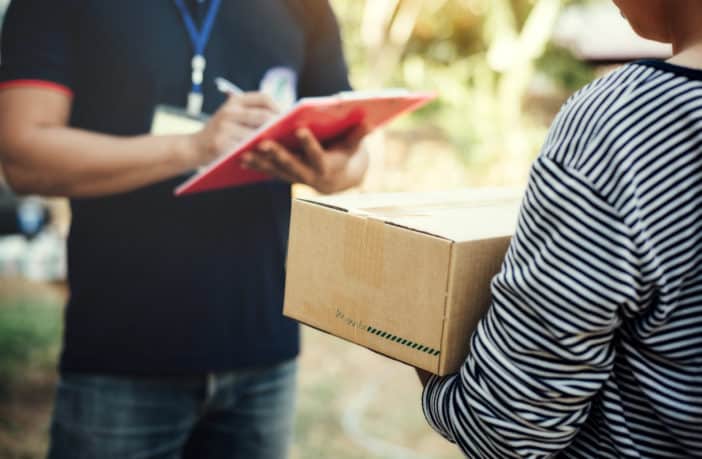On October 19, 2020
Last-mile logistic: not just a transport problem
Last mile logistics can be complicated and expensive. In face of evolving consumer demands, the solution is found in both transport and warehousing.

On October 19, 2020
Last mile logistics can be complicated and expensive. In face of evolving consumer demands, the solution is found in both transport and warehousing.
Last-mile logistics can be complicated and expensive. In the face of evolving consumer behaviour and demands, the solution is found in both transport and warehousing.
The last mile of any delivery has always been the most complicated part of the whole logistics supply chain.
Despite being the shortest part of any good’s journey, its inherent complexities make it the most expensive. In fact it can account for up to 53% of the total delivery cost. But, the profit margins are not the only concern when it comes to the last mile. Nowadays, delivery itself is one of the biggest influences in the consumer buying decision.
By being able to offer quicker, more convenient and sustainable delivery options, with intelligence optimization, the logistics companies will gain a significant competitive advantage with the next generation of consumers.
Unfortunately, this is no mean feat. To meet the expectations expected by customers of today and tomorrow, we must rethink the whole urban delivery paradigm, through both transport and warehousing. Discover the reflections and solutions proposed by FM Logistic, and the strategy consulting firm Roland Berger, by reading our White paper.
According to Global Web Index, free delivery is the primary purchase driver for 60% of internet users. On top of that, the accepted standards for delivery times have continued to shrink dramatically in the recent years. Earlier, 3-5 working days was the norm. The likes of Amazon have now made the ‘next-day delivery’ a benchmark. Interestingly, the trend is set to continue, with ‘same-day delivery’ already a reality, and expected to observe a spurt in demand, over the next few years. It is already expected to be worth $987 million in the US in 2019).
Not only do consumers want quick and free delivery, they also want maximum convenience. Long gone are the days where you would take a day off from work, for an important package. Customers want to have a choice of precisely when and where their goods will be delivered. They want to be able to change their choice and track their purchases throughout the journey. Similarly, they want to be able to return items with minimum hassle and at no extra cost.
All this may seem like a lot of work, but the rewards are absolutely worth it. 93% of online buyers are encouraged to buy more products if free shipping options are available. According to the consultancy firm, Capgemini, 82% of satisfied customers have shared positive delivery experiences with their friends and family.
So, how can we achieve this, to align to the consumer behaviour?
With populations growing further into the urban strata, the supply chain needs to take on a new sustainable intelligence model. It must provide the flexibility and reactiveness, sought after by today’s consumer.
Firstly, we must adopt greener and more automated forms of transport. They need to be adapted to the new regulatory and geographic landscape. As we talked about in our recent whitepaper, regulations are getting tighter and stricter. It means that fleets will have to be replenished with eco-friendly vehicles, if they are to continue operating in city centres. Robotics and automation will also play a key part in the future.
According to Adriel Lubarsky, business development director at Udelv: “When you take the driver out of the car, the delivery cost goes down by about 50% to 60%.” Many startups are looking at innovative ways to accompany or even replace the last-mile couriers, from robots to drones. While drones have hogged most of the limelight, regulatory issues mean that the ground-based robots are most likely to pioneer the automated last-mile delivery industry.
Yet, innovation in transport is not enough. We must also look at warehousing and fulfilment. On a general level, we need to shorten the last mile as much as possible. For example, by bringing distribution hubs closer to the city. On top of that, pooling distribution resources could allow companies to make significant savings, in terms of both time and money. Pooling opens up a whole new world of optimisation possibilities.
Inside the warehouse, automation is once again the word on everyone’s lips. The key to Amazon’s unrivalled success is automated fulfilment, which can increase the order accuracy, and the time spent walking to pick orders, by up to 40%. By leveraging big data and blockchain technology, orders will be picked, tracked and distributed with unprecedented efficiency and intelligence.
One solution that exemplifies this two-pronged approach is FM Logistic’s CityLogin. Already in place in many European cities, such as Madrid, Rome and Paris, it relies on small warehouses on the outskirts of the city, and hybrid or electric vehicles, to complete the pooled delivery rounds. The sustainable urban solution helps companies improve their sales efficiency and reputation, while decreasing their environmental footprint.
How can we help you ?
What are you looking for?
Fill in the form